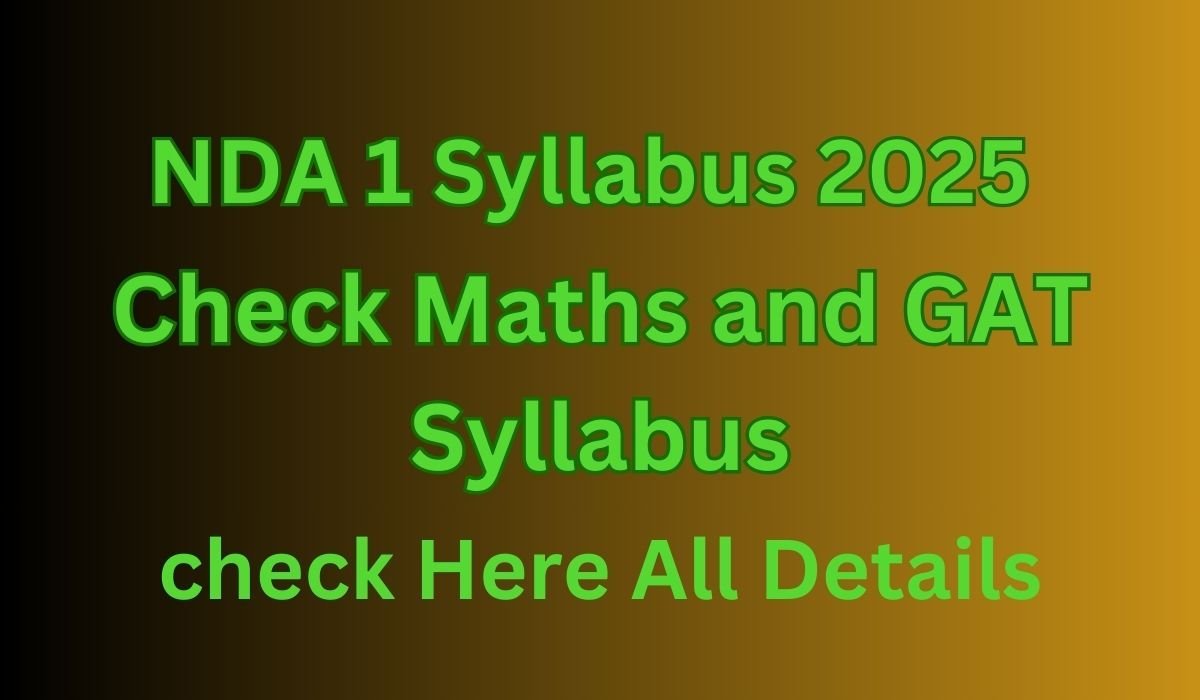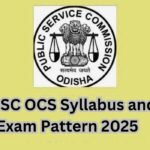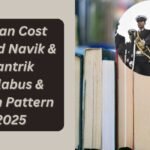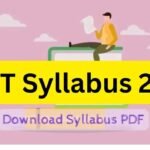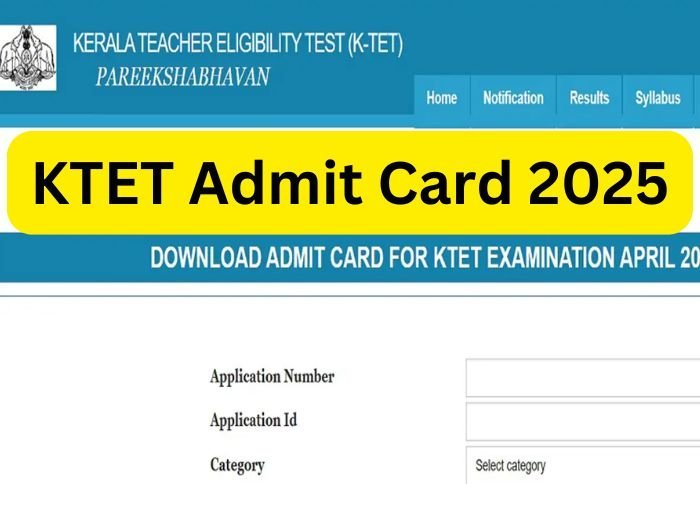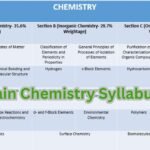NDA 1 Syllabus 2025 The NDA exam is conducted by UPSC to select candidates. The syllabus is divided into several subjects such as Mathematics, General Aptitude Test and others. Each paper will be 2 hours long.
NDA 1 Syllabus 2025 Details
NDA Syllabus : The Union Public Service Commission (UPSC), conducts the National Defence Academy twice a year. The NDA 1 notification along with the detailed syllabus for 2025 has been released. The NDA syllabus has two sections, for example Maths and GAT.
NDA Maths is a syllabus of class 12th difficulty. It includes topics like calculus, matrices, determinants, vectors and probability, statistics, 3-dimensional geometry, trigonometry etc. NDA GAT (General Aptitude Test) contains questions with a Class 10th difficulty level, including history, social sciences, geography, politics, current affairs etc.
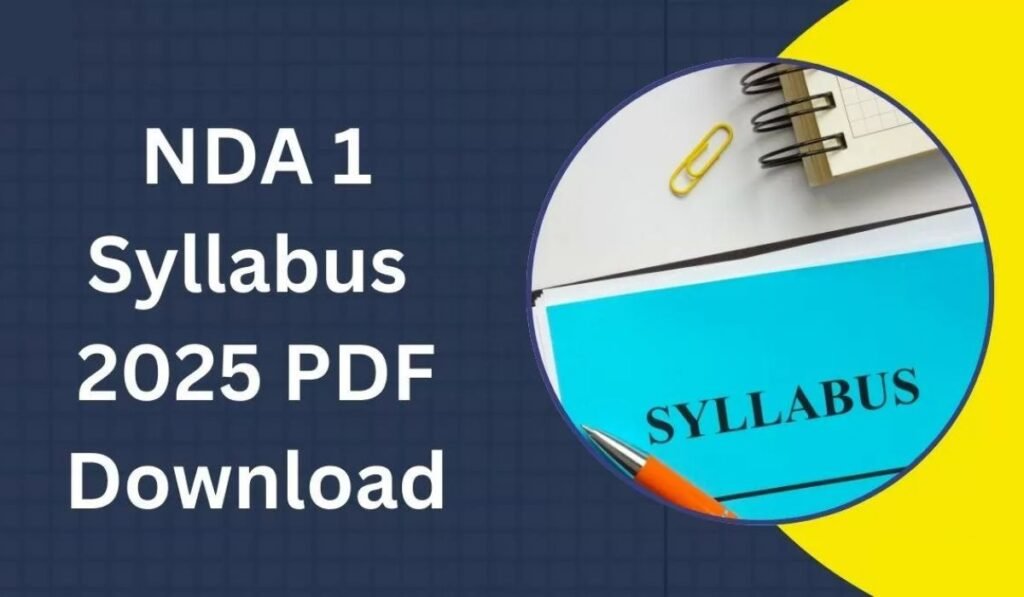
NDA 1 Syllabus 2025
The detailed syllabus should be studied by candidates before they apply for any vacancies. The NDA test is. Taken offline. The NDA syllabus. Is .summarized . In the table below.
| NDA Syllabus 2025 Overview | |
| Exam Conducting Body | Union Public Service Commission |
| Exam Name | National Defence Academy and Naval Academy Examination, 2025 |
| Frequency | Twice a Year |
| Exam Mode | Offline |
| Papers in NDA exam | Mathematics and General Ability Test (GAT) |
| Marking Scheme | Mathematics: 300 MarksGAT: 600 Marks |
| Total No. of Questions | Mathematics: 120GAT: 150 |
| Negative Marking | Mathematics: -0.83GAT: -1.33 marks |
| Exam Duration | 2 ½ hours for each paper |
| Official Website | upsc.gov.in |
NDA 1 Syllabus 2025 PDF Download
Download the pdf syllabus for candidates preparing to take the exam. Set theory, complex numbers and matrices are important topics in the NDA syllabus.
Exam Pattern 2025
The NDA 1 Exam Pattern 2025 will provide candidates with information on the format of the exam, the number of questions and the maximum marks per section. Candidates can align their strategies by familiarizing themselves with the NDA Exam Pattern 2025. Below is a table that shows the NDA written test pattern.
| Subject | Duration | Maximum Marks |
| Mathematics | 2½ Hours | 300 |
| General Ability Test | 2½ Hours | 600 |
| Total | 5 Hours | 900 |
Important Topics
Read this also – IIM MBA Syllabus: What is taught in IIM? Note the complete syllabus before admission
The NDA-2025 syllabus. Is divided. Into. Two sections. For example, General Aptitude Test (GAT) and Mathematics. Before beginning preparation, candidates must read through the syllabus and important topics. Candidates who pass the written exam . Will be. Invited. To an interview with the SSB. The NDA syllabus covers topics like algebra, determinants and matrices. It also includes calculus, trigonometry, and determinants. Below is a list of important NDA 1 topics.
| Topic | Important Topics |
| Algebra | Concept of sets, operations, Venn diagrams, De Morgan laws, Cartesian product, relation, equivalence relation; real numbers on a line; complex numbers (properties, modulus, argument, cube roots of unity); binary system; progressions; quadratic equations; linear inequations; permutation & combination; binomial theorem; logarithms. |
| Matrices and Determinants | Types of matrices, operations, determinant properties, adjoint and inverse of square matrices; solving linear equations (Cramer’s rule, Matrix Method). |
| Trigonometry | Angles (degrees, radians); trigonometric ratios and identities; sum, difference, multiple, sub-multiple angles; inverse trigonometric functions; applications (height and distance, properties of triangles). |
| Analytical Geometry of 2D and 3D | Cartesian coordinate system; distance formula; equations of lines, circles, and conics (parabola, ellipse, hyperbola); eccentricity; points in 3D space; distance between points; direction cosines and ratios; equations of planes, lines, spheres; angles between planes/lines. |
| Differential Calculus | Functions (domain, range, graph); composite and inverse functions; limits and continuity; derivatives (rules, interpretation, second-order); increasing/decreasing functions; applications (maxima, minima). |
| Integral Calculus and Differential Equations | Integration (inverse of differentiation, substitution, parts, standard integrals); definite integrals (area determination); differential equations (order, degree, formation, solutions); applications (growth, decay). |
| Vector Algebra | Vectors (2D, 3D); magnitude, direction, unit/null vectors; vector operations (addition, scalar multiplication, dot/cross products); applications (work, moment of force, geometry problems). |
| Statistics and Probability | Data classification, frequency distributions, graphical representation (histogram, pie chart, frequency polygon); central tendency (mean, median, mode); variance, standard deviation; correlation, regression; probability (random experiments, events, theorems, Bayes’ theorem, binomial distribution). |
GAT Syllabus 2025
The NDA GAT syllabus. Is. divided. Into two parts. Part A, English and Part B, general knowledge. The general knowledge section. Is. Further. Divided. Into six sections. Physics, Chemistry and General Science; History and the Freedom Movement; Geography and current events. The table below contains important topics.
Read this also – Airforce Agniveer Vayu Syllabus 2025 with Exam Pattern
| Part | Section | Important Topics |
| Part A | English | Grammar and usage, vocabulary, comprehension, and cohesion in extended text; understanding of English and effective use of words. |
| Part B | General Knowledge | Subjects: Physics, Chemistry, General Science, Social Studies, Geography, Current Events. |
| Section A | Physics | Physical properties (mass, weight, volume, density); Archimedes’ principle, barometer; motion (velocity, acceleration, Newton’s laws); force, momentum, stability, equilibrium; gravitation; work, power, energy; heat (measurement, change of state, latent heat, transfer modes); sound waves; light (reflection, refraction, mirrors, lenses); electricity; working principles of devices (e.g., pendulum, pulleys, telescope). |
| Section B | Chemistry | Physical and chemical changes; elements, mixtures, compounds; chemical symbols, equations; air and water properties; preparation of gases (H2, O2, N2, CO2); oxidation and reduction; acids, bases, salts; carbon forms; natural and artificial fertilizers; materials (e.g., soap, glass, cement); atomic structure, valency, molecular weights. |
| Section C | General Science | Living vs. non-living; cells, protoplasm, tissues; plant/animal growth and reproduction; human body and organs; common epidemics (causes, prevention); food (source, balanced diet); solar system; achievements of eminent scientists. |
| Section D | History & Freedom Movement | Indian history (culture, civilization); Indian freedom movement; constitution and administration; Five Year Plans; Panchayati Raj, cooperatives, Bhoodan, Sarvodaya, National Integration; teachings of Mahatma Gandhi; forces shaping modern world (Renaissance, American/French/Industrial/Russian Revolutions); science and technology; United Nations, Panchsheel, democracy, socialism, communism; India’s global role. |
| Section E | Geography | Earth (shape, size, latitudes, longitudes); time concept, International Date Line; earth movements, rocks, weathering, earthquakes, volcanoes; ocean currents, tides; atmosphere (composition, temperature, pressure, winds, cyclones, precipitation); climate types, world regions; India’s geography (climate, vegetation, resources, agriculture, industries, sea routes, imports, exports). |
| Section F | Current Events | Recent important events in India and worldwide; prominent Indian and international personalities (cultural activities, sports). |
Read this also – TS TET Paper 1 Syllabus 2025: Paper 2 Syllabus Here download Here
